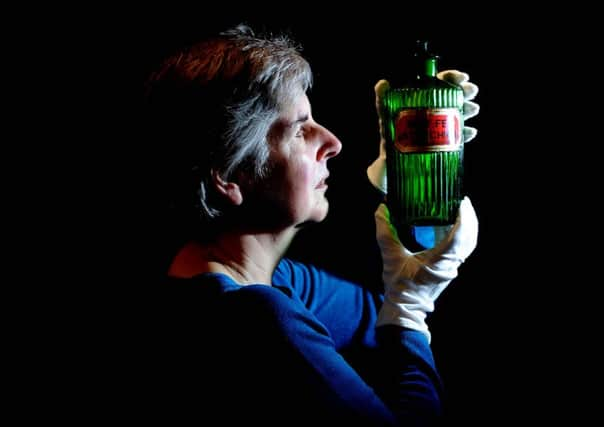Leeds exhibition reveals Yorkshire's grisly past


But, as a new exhibition at a Leeds museum reveals, retribution and justice in our region has changed drastically over the past 350 years.
The Crime and Punishment exhibition at Abbey House Museum in Kirkstall will show dozens of artefacts involved in the grislier side of Yorkshire’s history.
Advertisement
Hide AdAdvertisement
Hide AdAmong them are a hangman’s noose, used for a real execution in the region, as well as ‘The Scold’s Bridle’ - a torture device used to punish gossips by, quite literally, holding their tongues.
The exhibition opens on Saturday January 23 and will run for the rest of the year.
Kitty Ross, curator of Leeds’ Museums and Galleries social history, said: “The exhibition gives an overview of how crime and punishment have evolved over the centuries, including some of the darker episodes from the city’s past like several riots, executions and some historical murders.”
There will also be displays of bottles of poison that, until Victorian times, were available to buy over the counter - including arsenic, sulphuric acid, and strychnine.
Advertisement
Hide AdAdvertisement
Hide AdItems have been loaned by Thackray Medical Museum, the Galleries of Justice Museum in Nottingham and Ripon Museums.
The exhibition will look at crimes and misdemeanours that were punishable under law in the past, many of which visitors will find surprising. Miss Ross said: “Some of them sound silly to us today but are mostly common sense rules about health and safety and consideration for your neighbours. For example, it was illegal to keep a pigsty in front of your house, carry a plank carelessly along the pavement or play annoying games in the street.”
One of the cases that is explored in the exhibition is that of Arthur Mangey, a silversmith who lived on Briggate in Leeds.
He was hanged in 1696 for chipping coins - an offence which amounted to treason in the 17th century.
Advertisement
Hide AdAdvertisement
Hide AdMangey was the maker of the Leeds Mace, which is still in the city’s civic hall to this day.
There are also artefacts from the Gas Riots of 1890, when striking gas workers threw rocks at policemen around the Wellington Street area of the city. The riots were dispelled partly thanks to the influence of Colonel Harding, who coincidentally owned Abbey House.
Miss Ross said that there were ethical considerations when curating the exhibition. She said: “All the artefacts on display are from quite some time ago, some of them are very dark. We’re not featuring anything from the crimes of the Yorkshire Ripper for example, and we’re expecting a lot of schoolchildren to visit so we’ve tried to keep things suitable for them.”
Councillor Brian Selby, Leeds City Council’s lead member for museums and galleries, said:
Advertisement
Hide AdAdvertisement
Hide Ad“The evolution of law, order and justice is a fascinating subject and this new exhibition shines a light on some of the many ways it has influenced life in Leeds over the centuries.
“I’m sure Crime and Punishment will be a wonderful learning experience for visitors and will really make them think about how much the law and our perceptions of crime have developed and become more sophisticated through the ages.”
Special events at the exhibition over the next few months include talks from Leeds authors Chris Nickson and Frances Brody.
To book onto a talk, contact 0113 378 4079 or email [email protected].